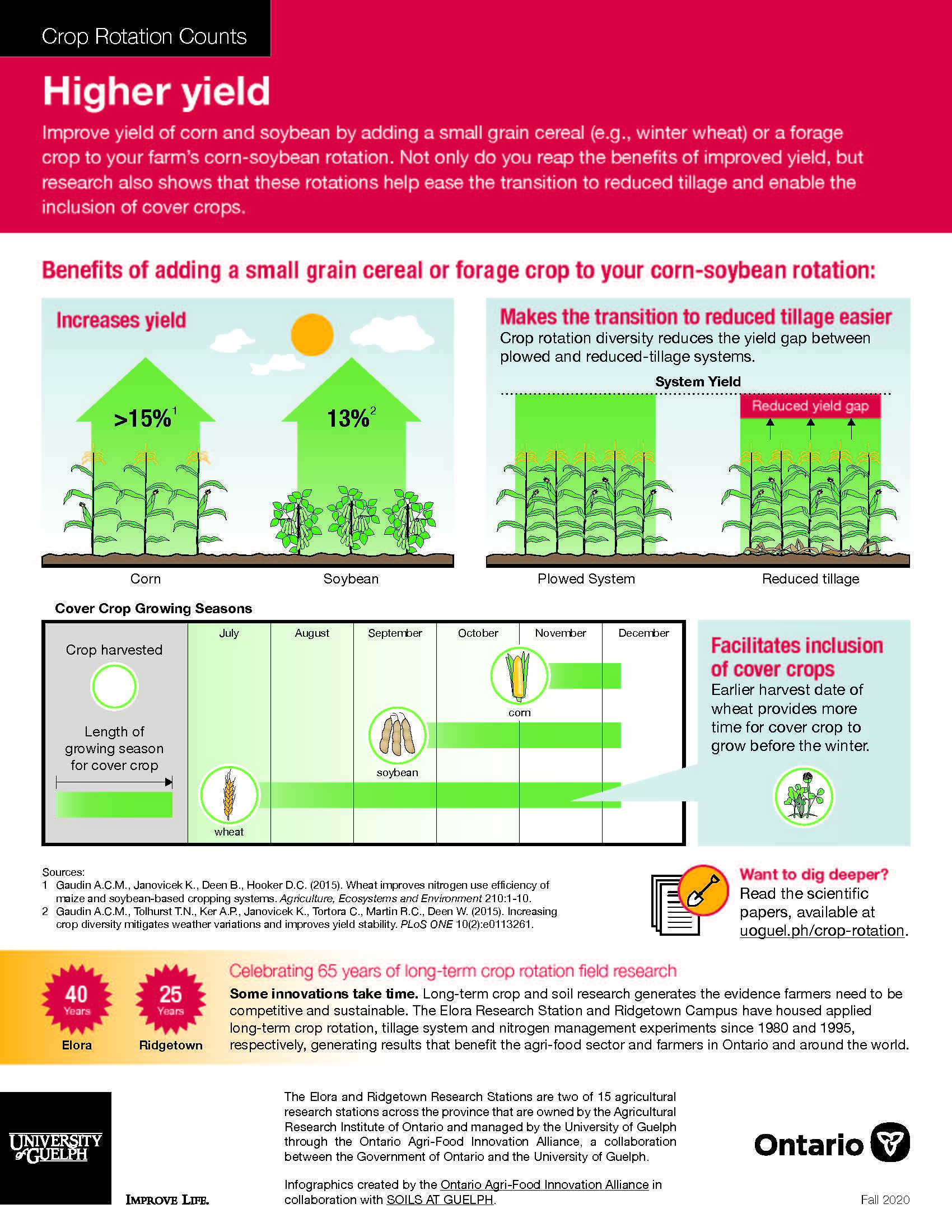Crop Rotation Counts: Higher Yield (Text Version)

Improve yield of corn and soybean by adding a small grain cereal (e.g., winter wheat) or a forage crop to your farm’s corn-soybean rotation. Not only do you reap the benefits of improved yield, but research also shows that these rotations help ease the transition to reduced tillage and enable the inclusion of cover crops.
Benefits of adding a small grain cereal or forage crop to your corn-soybean rotation:
- Increases yield by more than 15 per cent in corn (see source 1) and 13 per cent in soybean (see source 2).
- Makes the transition to reduced tillage easier: Crop rotation diversity reduces the yield gap (system yield) between plowed and reduced-tillage systems.
- Facilitates inclusion of cover crops: Earlier harvest date of wheat (July) provides more time for cover crop to grow than soybean (September) or corn (October/November) before the winter.
Sources:
- Gaudin A.C.M., Janovicek K., Deen B., Hooker D.C. (2015). Wheat improves nitrogen use efficiency of maize and soybean-based cropping systems. Agriculture, Ecosystems and Environment 210:1-10.
- Gaudin A.C.M., Tolhurst T.N., Ker A.P., Janovicek K., Tortora C., Martin R.C., Deen W. (2015). Increasing crop diversity mitigates weather variations and improves yield stability. PLoS ONE 10(2):e0113261.
Want to dig deeper?
Celebrating 65 years of long-term crop rotation field research
Some innovations take time. Long-term crop and soil research generates the evidence farmers need to be competitive and sustainable. The Elora Research Station and Ridgetown Campus have housed applied long-term crop rotation, tillage system and nitrogen management experiments since 1980 and 1995, Ridgetown respectively, generating results that benefit the agri-food sector and farmers in Ontario and around the world.
The Elora and Ridgetown Research Stations are two of 15 agricultural research stations across the province that are owned by the Agricultural Research Institute of Ontario and managed by the University of Guelph through the Ontario Agri-Food Innovation Alliance, a collaboration between the Government of Ontario and the University of Guelph. Infographics created by the Ontario Agri-Food Innovation Alliance in collaboration with SOILS AT GUELPH.